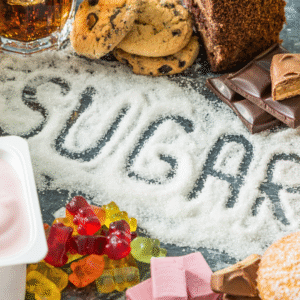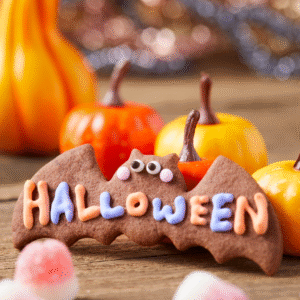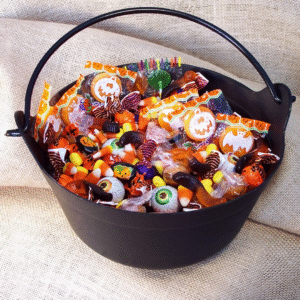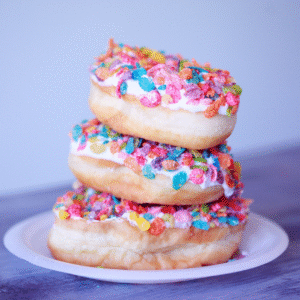The Secret Breath No One Notices (But Everyone Needs)
Just Breathe: Stress shows up in many forms, such as tight shoulders, restless thoughts, or the sudden rush of nerves...

|
Getting your Trinity Audio player ready...
|

Halloween is sweet, sparkly, and fun—and also a moment when many of us feel uneasy about sugar. We want our kids to delight in costumes and community, yet we also see how easy it is to slip from “a few treats” into days of cravings, meltdowns, and foggy mornings. This isn’t about fear or shame. It’s about awareness, compassion, and making choices that align with our values.
When we eat sugary foods, the brain’s reward system releases dopamine, the “that felt good—do it again” chemical. For some kids (and adults), this reward loop can lead to strong cravings and “more, more, more” thinking. That doesn’t make sugar a moral failure or your child “bad”—it simply means a powerful system in the brain has been activated.
Is sugar a “gateway drug”? The language is loaded, and science is nuanced. Sugar isn’t a drug in the legal or pharmacologic sense, but it can mimic some habit-forming patterns—especially when we’re stressed, underslept, or using sweets to fill emotional gaps. The point isn’t to demonize candy; it’s to stay awake to how it makes our bodies and minds feel, and to guide our kids toward self-awareness, too.
It’s hard to parent in a world designed to sell “just one more.” Bright packages at kids’ eye level, seasonal displays, cartoon mascots—marketing is engineered to capture attention and build desire. And yes, we pay the price: families, schools, and health systems absorb the downstream effects—from mood swings and poor sleep to higher risks of weight gain and insulin resistance over time.
This isn’t about panic or perfection. It’s an invitation to ask:
 questions to ask
questions to askShould there be clearer front-of-pack labels so parents can spot high added sugar at a glance? Would simple warnings (like those on beverages in some regions) help families make informed choices? How might manufacturers share responsibility when products target children? These are big community questions, worthy of calm, thoughtful debate. As parents, we don’t control policy—but we can model mindful, informed choices at home and add our voices to conversations at schools and local boards.
Different health organizations set different limits, but a practical rule of thumb for added sugars is to keep them low most days—especially for kids. A single “fun size” or two can already push a small child near a typical daily limit. The goal isn’t zero forever; it’s balance over the week and awareness in the moment.
A quick guide: on the Nutrition Facts panel, “Added Sugars” are listed in grams.
Think “structure without struggle.”



Many of us reach for sugar when we’re tired, stressed, or needing comfort. Be tender with yourself. Notice the craving, take a few slow breaths, and ask:
“What am I really needing—rest, water, protein, a walk, a hug, a pause?”
Respond to the need beneath the craving. That’s real self-care.
Halloween can be joyful and conscious. We can let our kids savor the magic—neighbors, costumes, giggles—while teaching them to listen to their bodies, read labels, and choose with care. No fear, no shame, just steady guidance and kind boundaries.
This year, try a simple mantra: “Fun first, awareness always.”
Enjoy the night lights and laughter, the cozy porch chats, the tiny treasures dropped into tiny bags—and wake up the next morning feeling like you honored your values and your family’s well-being.
Just Breathe: Stress shows up in many forms, such as tight shoulders, restless thoughts, or the sudden rush of nerves...
Be Present: We hear it often—“Be present.” It’s a phrase that drifts through Yoga classes, appears in self-help books,...
What Are You Putting On Your Skin? As we navigate through life, our relationship with beauty evolves. What once worked...
Align with Moon Energy People have looked to the moon for centuries as a source of wisdom, guidance, and transformation....
Aligning Your Chakras: The chakra system is an ancient framework that maps out energy centers within the body, influencing our...
An Invitation For You: As women, we often move through life in service to others—our families, careers, and communities—while...
© 2025 Slow Harvest Yoga